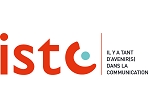Establishment
Language of instruction
French, English
Teaching content
UE16
This course occurs in the following program(s)
Training officer(s)
L.ORIGI
Stakeholder(s)
L.ORIGI
Présentation
Prerequisite
Fully understanding basic administration vocabulary, being familiar with the content of a balance sheet and an income statement, being proficient in VAT calculations.
Goal
First, a business must analyse its own economic performance, i.e. assess its ability to clear profits, which determines its longevity and development. This assessment requires an analytical study of its results: through this analysis, the manager will be able to act to control costs and to improve the business’ profitability.
Second, analysing the balance sheet helps the manager to form an opinion about the ability of their company or that of the partners (clients for instance) to honour debts and to avoid risking bankruptcy. When choosing a new business partner, this analysis becomes even more important, as one bad decision might compromise the company's longevity.
The aim of this course is to present tools which will help forming an opinion about a partner’s financial health, but also a number of indicators used by businesses in their financial communication.
Second, analysing the balance sheet helps the manager to form an opinion about the ability of their company or that of the partners (clients for instance) to honour debts and to avoid risking bankruptcy. When choosing a new business partner, this analysis becomes even more important, as one bad decision might compromise the company's longevity.
The aim of this course is to present tools which will help forming an opinion about a partner’s financial health, but also a number of indicators used by businesses in their financial communication.
Presentation
Topic 1: READING FINANCIAL STATEMENTS
• Reminders about the advantages and content of a balance sheet (assets and liabilities, main items, classification logic)
• Reminders about the advantages and content of an income statement (costs and income, main items, classification logic)
Topic 2: ANALYSING AN INCOME STATEMENT
• Calculating and interpreting SIG (intermediate balances)
• Calculating and interpreting CAF (self-financing capacity)
Topic 3: FUNCTIONAL ANALYSIS OF A BALANCE SHEET
• Creating a functional balance sheet
• Calculating and interpreting the overall net working capital, the working capital requirement, the net cash flow
• Calculating and analysing the key ratios (length of supplier credit and customer credit, return on equity, financing ratio, financial self-sufficiency)
• Comparing with the industry sector & advice for entrepreneurs in order to improve their cash flow situation
• Reminders about the advantages and content of a balance sheet (assets and liabilities, main items, classification logic)
• Reminders about the advantages and content of an income statement (costs and income, main items, classification logic)
Topic 2: ANALYSING AN INCOME STATEMENT
• Calculating and interpreting SIG (intermediate balances)
• Calculating and interpreting CAF (self-financing capacity)
Topic 3: FUNCTIONAL ANALYSIS OF A BALANCE SHEET
• Creating a functional balance sheet
• Calculating and interpreting the overall net working capital, the working capital requirement, the net cash flow
• Calculating and analysing the key ratios (length of supplier credit and customer credit, return on equity, financing ratio, financial self-sufficiency)
• Comparing with the industry sector & advice for entrepreneurs in order to improve their cash flow situation
Modalités
Forms of instruction
Cours magistral, exercices pratiques, vidéos et exercices corrigés sur le site web de l’enseignant.
Lecture, practical exercises, videos and exercise answers on the teacher's website.
Organization
| Type | Amount of time | Comment | |
|---|---|---|---|
| Independent study | |||
| Travail personnel indicatif | 30,00 | Travail du cours, recherche des exercices, travail sur des supports complémentaires (dont internet). | |
| Face to face | |||
| 15,00 | |||
| Overall student workload | 45,00 | ||
Evaluation
| Control type | Duration | Amount | Weighting |
|---|---|---|---|
| Continuous assessment | |||
| 2,00 | 1 | 40,00 | |
| Final Exam | |||
| 2,00 | 1 | 60,00 | |
| TOTAL | 100,00 | ||
Ressources
Internet resources






